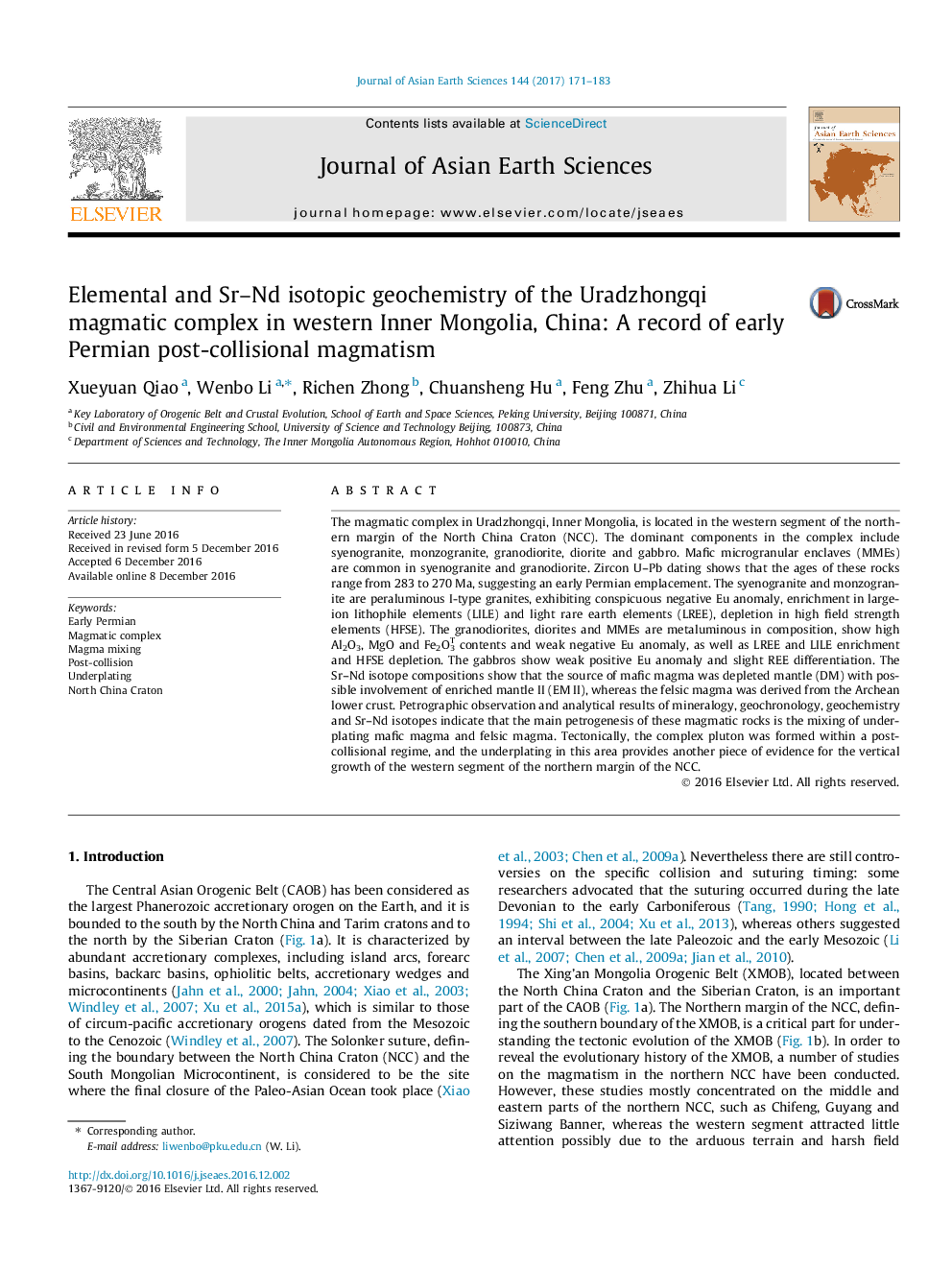| کد مقاله | کد نشریه | سال انتشار | مقاله انگلیسی | نسخه تمام متن |
|---|---|---|---|---|
| 5785977 | 1640328 | 2017 | 13 صفحه PDF | دانلود رایگان |

- The Uradzhongqi complex was formed in the early Permian.
- The petrogenesis of the complex is mixing-mingling of mafic and felsic magmas.
- Magma sources are different, indicating underplating of mafic magma.
- The complex pluton was formed in a post-collision stage.
The magmatic complex in Uradzhongqi, Inner Mongolia, is located in the western segment of the northern margin of the North China Craton (NCC). The dominant components in the complex include syenogranite, monzogranite, granodiorite, diorite and gabbro. Mafic microgranular enclaves (MMEs) are common in syenogranite and granodiorite. Zircon U-Pb dating shows that the ages of these rocks range from 283 to 270Â Ma, suggesting an early Permian emplacement. The syenogranite and monzogranite are peraluminous I-type granites, exhibiting conspicuous negative Eu anomaly, enrichment in large-ion lithophile elements (LILE) and light rare earth elements (LREE), depletion in high field strength elements (HFSE). The granodiorites, diorites and MMEs are metaluminous in composition, show high Al2O3, MgO and Fe2O3T contents and weak negative Eu anomaly, as well as LREE and LILE enrichment and HFSE depletion. The gabbros show weak positive Eu anomaly and slight REE differentiation. The Sr-Nd isotope compositions show that the source of mafic magma was depleted mantle (DM) with possible involvement of enriched mantle II (EM II), whereas the felsic magma was derived from the Archean lower crust. Petrographic observation and analytical results of mineralogy, geochronology, geochemistry and Sr-Nd isotopes indicate that the main petrogenesis of these magmatic rocks is the mixing of underplating mafic magma and felsic magma. Tectonically, the complex pluton was formed within a post-collisional regime, and the underplating in this area provides another piece of evidence for the vertical growth of the western segment of the northern margin of the NCC.
Journal: Journal of Asian Earth Sciences - Volume 144, 15 August 2017, Pages 171-183